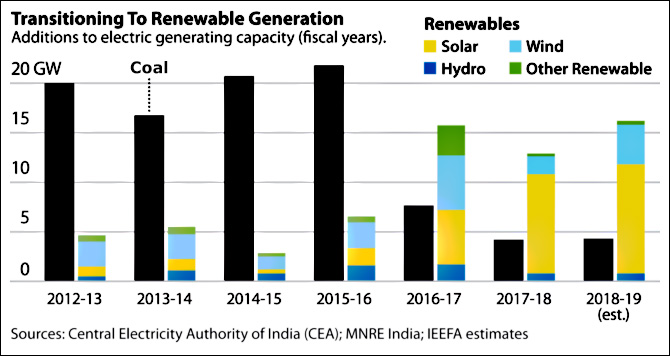Tonight is dex night. In the future this will return to Thursday nights, but for now I’m awake on Friday¹ with nothing much to do. I’m tired of working on photos for the moment, so instead I’ll put up a few miscellaneous blog posts.
The first is this chart from James Wimberley, which shows that the coal bubble in India has well and truly burst:

I don’t have anything special to say about this, other than it’s good news. We are on a cusp at the moment, with renewables worldwide now underpricing coal and almost competitive with natural gas—and that’s even when you add in the shrinking cost of storage. If we can continue this, in a few years the only economically sensible new electric generation will be 100 percent renewable. That’s obviously good from an environmental view, but it’s also good from an employment view: a lot more people will be employed building out renewable infrastructure than are currently (or ever will be) employed in coal, and that’s probably true even if you add gas to the equation. With just a little more progress, renewables will be a win in practically every respect.
If you want (a lot) more detail about this ongoing revolution, David Roberts has it here.
¹Yes, I know it’s really Saturday morning. Cut me some slack.

















